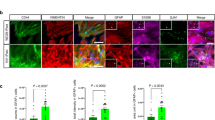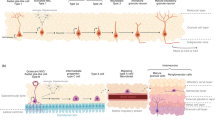Abstract
One of the strategies of treating Parkinson’s disease (PD) is the replacement of lost neurons in the substantia nigra with healthy dapamingergic cells. Potential sources for cells range from autologous grafts of dopamine secreting cells, fetal ventral mesencephalon tissue, to various stem cell types. Over the past quarter century, many experimental replacement therapies have been tried on PD animal models as well as human patients, yet none resulted in satisfactory outcomes that warrant wide applications. Recent progress in stem cell biology has shown that nuclear transfer embryonic stem cells (ntES) or induced pluripotent stem cells (iPS) derived cells can be used to successfully treat rodent PD models, thus solving the problem of immunorejection and paving the way for future autologous transplantations for treating PD. Meanwhile, however, post mortem analysis of patients who received fetal brain cell transplantation revealed that implanted cells are prone to degeneration just like endogenous neurons in the same pathological area, indicating long-term efficacy of cell therapy of PD needs to overcome the degenerating environment in the brain. A better understanding of neurodegeneration in the midbrain appeared to be a necessary step in developing new cell therapies in Parkinson’s disease. It is likely that future cell replacement will focus on not only ameliorating symptoms of the disease but also trying to slow the progression of the disease by either neuroprotection or restoring the micro-environment in the midbrain.
Similar content being viewed by others
References
Lindvall O, Brundin P, Widner H, et al. Grafts of fetal dopamine neurons survive and improve motor function in Parkinson’s disease. Science, 1990, 247: 574–577, 2105529, 10.1126/science.2105529, 1:STN:280:DyaK3c7ktVOhtA%3D%3D
Freed C R, Greene P E, Breeze R E, et al. Transplantation of embryonic dopamine neurons for severe Parkinson’s disease. N Engl J Med, 2001, 344: 710–719, 11236774, 10.1056/NEJM200103083441002, 1:STN:280:DC%2BD3M7ltFCisQ%3D%3D
Olanow C W, Goetz C G, Kordower J H, et al. A double-blind controlled trial of bilateral fetal nigral transplantation in Parkinson’s disease. Ann Neurol, 2003, 54: 403–414, 12953276, 10.1002/ana.10720
Li J Y, Englund E, Holton J L, et al. Lewy bodies in grafted neurons in subjects with Parkinson’s disease suggest host-to-graft disease propagation. Nat Med, 2008, 14: 501–503, 18391963, 10.1038/nm1746, 1:CAS:528:DC%2BD1cXlsFCmsrs%3D
Kordower J H, Chu Y, Hauser R A, et al. Lewy body-like pathology in long-term embryonic nigral transplants in Parkinson’s disease. Nat Med, 2008, 14: 504–506, 18391962, 10.1038/nm1747, 1:CAS:528:DC%2BD1cXlsFCmsrg%3D
Mendez I, Vinuela A, Astradsson A, et al. Dopamine neurons implanted into people with Parkinson’s disease survive without pathology for 14 years. Nat Med, 2008, 14: 507–509, 18391961, 10.1038/nm1752, 1:CAS:528:DC%2BD1cXlsFCmsrc%3D
Newman M B, Bakay R A. Therapeutic potentials of human embryonic stem cells in Parkinson’s disease. Neurotherapeutics, 2008, 5: 237–251, 18394566, 10.1016/j.nurt.2008.02.004, 1:CAS:528:DC%2BD1cXmtFOltLY%3D
Bjugstad K B, Teng Y D, Redmond D E Jr, et al. Human neural stem cells migrate along the nigrostriatal pathway in a primate model of Parkinson’s disease. Exp Neurol, 2008, 211: 362–369, 18394605, 10.1016/j.expneurol.2008.01.025, 1:CAS:528:DC%2BD1cXmtVWqsLc%3D
Tabar V, Tomishima M, Panagiotakos G, et al. Therapeutic cloning in individual parkinsonian mice. Nat Med, 2008, 14: 379–381, 18376409, 10.1038/nm1732, 1:CAS:528:DC%2BD1cXktl2is7Y%3D
Yamanaka S. Strategies and new developments in the generation of patient-specific pluripotent stem cells. Cell Stem Cell, 2007, 1: 39–49, 18371333, 10.1016/j.stem.2007.05.012, 1:CAS:528:DC%2BD2sXptV2rsrk%3D
Pardal R, Ortega-Sáenz P, Durán R, et al. Glia-like stem cells sustain physiologic neurogenesis in the adult mammalian carotid body. Cell, 2007, 131: 364–377, 17956736, 10.1016/j.cell.2007.07.043, 1:CAS:528:DC%2BD2sXht1KqsbbF
Park H J, Lee P H, Bang O Y, et al. Mesenchymal stem cells therapy exerts neuroprotection in a progressive animal model of Parkinson’s disease. J Neurochem, 2008, 107: 141–151, 18665911, 10.1111/j.1471-4159.2008.05589.x, 1:CAS:528:DC%2BD1cXht1KgtLbE
Friling S, Andersson E, Thompson L H, et al. Efficient production of mesencephalic dopamine neurons by Lmx1a expression in embryonic stem cells. Proc Natl Acad Sci USA, 2009, 106: 7613–7618, 19383789, 10.1073/pnas.0902396106, 1:CAS:528:DC%2BD1MXmt1Krsr4%3D
Shimada H, Yoshimura N, Tsuji A, et al. Differentiation of dopaminergic neurons from human embryonic stem cells: modulation of differentiation by FGF-20. J Biosci Bioeng, 2009, 107: 447–454, 19332307, 10.1016/j.jbiosc.2008.12.013, 1:CAS:528:DC%2BD1MXntlegtL8%3D
Lee S H, Lumelsky N, Studer L, et al. Efficient generation of midbrain and hindbrain neurons from mouse embryonic stem cells. Nat Biotechnol, 2000, 18: 675–679, 10835609, 10.1038/76536, 1:CAS:528:DC%2BD3cXktlWjs70%3D
Bjorklund L M, Sánchez-Pernaute R, Chung S, et al. Embryonic stem cells develop into functional dopaminergic neurons after transplantation in a Parkinson rat model. Proc Natl Acad Sci USA, 2002, 99: 2344–2349, 11782534, 10.1073/pnas.022438099, 1:CAS:528:DC%2BD38XitVSrurg%3D
Takahashi K, Yamanaka S. Induction of pluripotent stem cells from mouse embryonic and adult fibroblast cultures by defined factors. Cell, 2006, 126: 663–676, 16904174, 10.1016/j.cell.2006.07.024, 1:CAS:528:DC%2BD28Xpt1aktbs%3D
Wernig M, Zhao J P, Pruszak J, et al. Neurons derived from reprogrammed fibroblasts functionally integrate into the fetal brain and improve symptoms of rats with Parkinson’s disease. Proc Natl Acad Sci USA, 2008, 105: 5856–5861, 18391196, 10.1073/pnas.0801677105, 1:CAS:528:DC%2BD1cXltVyis70%3D
Svendsen C. Stem cells and Parkinson’s disease: toward a treatment, not a cure. Cell Stem Cell, 2008, 2: 412–413, 18462691, 10.1016/j.stem.2008.04.010, 1:CAS:528:DC%2BD1cXmt1Wrs78%3D
McKay R, Kittappa R. Will stem cell biology generate new therapies for Parkinson’s disease? Neuron, 2008, 58: 659–661, 18549778, 10.1016/j.neuron.2008.05.016, 1:CAS:528:DC%2BD1cXnvVSqsbs%3D
Espejo E F, Montoro R J, Armengol J A, et al. Cellular and functional recovery of Parkinsonian rats after intrastriatal transplantation of carotid body cell aggregates. Neuron, 1998, 20: 197–206, 9491982, 10.1016/S0896-6273(00)80449-3, 1:CAS:528:DyaK1cXhtlGns7k%3D
Toledo-Aral J J, Méndez-Ferrer S, Pardal R, et al. Dopaminergic cells of the carotid body: Physiological significance and possible therapeutic applications in Parkinson’s disease. Brain Res Bull, 2002, 57: 847–853, 12031283, 10.1016/S0361-9230(01)00771-7, 1:CAS:528:DC%2BD38XjvVGitrw%3D
Kokovay E, Temple S. Taking neural crest stem cells to new heights. Cell, 2007, 131: 234–236, 17956725, 10.1016/j.cell.2007.10.006, 1:CAS:528:DC%2BD2sXht1KqsbnE
Hong M, Mukhida K, Mendez I. GDNF therapy for Parkinson’s disease. Expert Rev Neurother, 2008, 8: 1125–1139, 18590482, 10.1586/14737175.8.7.1125, 1:CAS:528:DC%2BD1cXnvFShs7s%3D
Gill S S, Patel N K, Hotton G R, et al. Direct brain infusion of glial cell line-derived neurotrophic factor in Parkinson disease. Nat Med, 2003, 9: 589–595, 12669033, 10.1038/nm850, 1:CAS:528:DC%2BD3sXjtlamtLw%3D
Patel N K, Bunnage M, Plaha P, et al. Intraputamenal infusion of glial cell line-derived neurotrophic factor in PD: a two-year outcome study. Ann Neurol (2005). 57: 298–302, 15668979, 10.1002/ana.20374, 1:CAS:528:DC%2BD2MXhs1Citr8%3D
Slevin J T, Gerhardt G A, Smith C D, et al. Improvement of bilateral motor functions in patients with Parkinson disease through the unilateral intraputaminal infusion of glial cell line-derived neurotrophic factor. J Neurosurg, 2005, 102: 216–222, 15739547, 10.3171/jns.2005.102.2.0216, 1:CAS:528:DC%2BD2MXhslygs7s%3D
Peck P. Amgen decision to halt GDNF clinical trials and withdraw the drug triggers protest from researchers and patients. Neurol Today, Am Acad Neurol, 2005, 5: 4, 7, 24
Nutt J G, Burchiel K J, Comella C L, et al. Randomized, double-blind trial of glial cell line-derived neurotrophic factor (GDNF) in PD. Neurology, 2003, 60: 69–73, 12525720, 1:CAS:528:DC%2BD38Xps1aiur8%3D
Morrison P F, Lonser R R, Oldfield E H. Convective delivery of glial cell line-derived neurotrophic factor in the human putamen. J Neurosurg, 2007, 107: 74–83, 17639877, 10.3171/JNS-07/07/0074
Elsworth J D, Redmond D E Jr, Leranth C, et al. AAV2-mediated gene transfer of GDNF to the striatum of MPTP monkeys enhances the survival and outgrowth of co-implanted fetal dopamine neurons. Exp Neurol, 2008, 211: 252–258, 18346734, 10.1016/j.expneurol.2008.01.026, 1:CAS:528:DC%2BD1cXlsF2qtLk%3D
Emborg M E, Ebert A D, Moirano J, et al. GDNF-secreting human neural progenitor cells increase tyrosine hydroxylase and VMAT2 expression in MPTP-treated cynomolgus monkeys. Cell Transplant, 2008, 17: 383–395, 18522241
Author information
Authors and Affiliations
Corresponding author
Additional information
Support by the National Key Basic Research and Development Program of China (Grant No. 2006CB0F0603) and Science and Technology Plan, Beijing Municipal Science & Technology Commission (Grant No. H020220010290)
Rights and permissions
About this article
Cite this article
Ren, Z., Zhang, Y. Cells therapy for Parkinson’s disease—so close and so far away. SCI CHINA SER C 52, 610–614 (2009). https://doi.org/10.1007/s11427-009-0090-8
Received:
Accepted:
Published:
Issue Date:
DOI: https://doi.org/10.1007/s11427-009-0090-8




